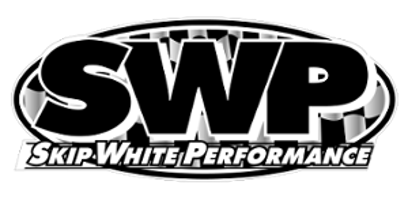Note:We also stock reverse rotation water pumps for later model serpentine belt Chevy engines.
Aluminum water pumps offer several advantages over typical cast pumps. They are generally half the weight, which can improve overall engine performance. Additionally, the aluminum surface is excellent for accepting paint, allowing for customization to match your engine bay.
Aluminum vs. Steel Impellers

Our water pumps come with aluminum impellers, which help reduce rotational mass and dissipate heat more efficiently. This is particularly beneficial for high-performance engines. Most aluminum water pumps on the market come with stamped steel or machined iron impellers and claim to be high volume. However, our aluminum impellers provide a superior alternative, especially for modified engines. We have tested various water pumps on stock engines without encountering heating problems, but for vehicles with modified engines, our aluminum water pumps have proven to be the best choice.
Case Study: 383 Stroker Engine in a '79 C-3 Corvette
We recently installed a 383 stroker engine in a 1979 C-3 Corvette and converted it to electric fans. Despite this upgrade, the car ran hotter than desired, with temperatures soaring to 235°F within ten minutes. After replacing the OEM cast iron water pump with our aluminum water pump featuring an aluminum impeller, we saw a significant reduction in engine temperature, dropping by approximately 15 degrees.
Now, we exclusively use this water pump for all of our Small Block Chevy (SBC) turn-key engines.
Mounting Hardware and Installation
Quality mounting hardware is crucial for ensuring the longevity and reliability of your water pump.
If you need mounting hardware, call us at 📞 423-722-5152.
Gasket Sealer
When installing a water pump on a small block Chevy, there are several gasket sealing options to consider, each with its unique advantages and potential drawbacks. Alongside Permatex Aviation Form-A-Gasket Sealant and Edelbrock Gasgacinch, many builders also consider RTV silicone or the option of using no sealer at all, depending on their preferences and the specific application.
RTV silicone (Room Temperature Vulcanizing silicone) is a popular choice among engine builders due to its versatility and ease of use. RTV silicone forms a flexible, waterproof seal that is resistant to high temperatures, making it ideal for sealing gaskets in areas exposed to heat and fluid, like a water pump. It’s particularly effective at filling in minor imperfections on the surfaces of the water pump and engine block, which can help prevent leaks. However, RTV silicone has some drawbacks. If applied too thickly, it can squeeze out and potentially block coolant passages, leading to engine overheating. Additionally, RTV can be challenging to remove if disassembly is required later, and some types of RTV may not bond well with certain gasket materials, potentially leading to leaks over time.
For those who prefer a more straightforward approach, using no sealer at all is also an option, particularly if you’re working with high-quality gaskets designed for dry installation. Modern gaskets are often engineered to seal effectively on their own without the need for additional sealant, thanks to advanced materials and construction techniques. Installing the gasket dry can make future disassembly easier and eliminates the risk of using too much sealer, which can create problems. However, the success of a dry installation heavily depends on the condition of the mating surfaces. They must be impeccably clean, flat, and free of any imperfections. If the surfaces aren’t in perfect condition, a dry gasket installation might not provide a reliable seal, leading to potential leaks.
We stock reverse rotation water pumps used by later model serpentine belt Chevy engines.

